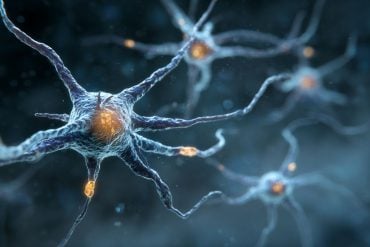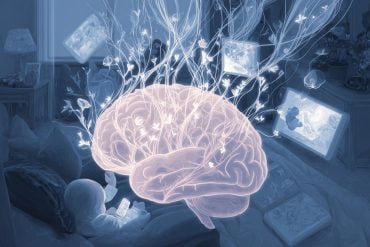Summary: A new study reveals that emotionally charged or surprising events can retroactively and proactively rescue weak memories, ensuring they persist. The brain doesn’t just preserve the striking moment itself, but also mundane experiences connected to it, depending on timing and similarity.
Researchers demonstrated that the mind prioritizes fragile memories in a graded fashion, with stronger recall when there’s conceptual overlap. These findings could inform educational strategies, memory-boosting therapies, and trauma interventions.
Key Facts
- Graded Prioritization: The brain strengthens weak memories in proportion to their similarity to emotional events.
- Retroactive vs. Proactive: Events after are remembered based on impact; earlier events are rescued if conceptually linked.
- Broad Implications: Could aid learning, support aging memory, and guide trauma treatment approaches.
Source: Boston University
Some memories are easy to recall—lush with detail, fresh as the moment itself. Others are more tenuous, like faded sketches, and the most stubborn ones can refuse to resurface at all.
Why do our brains enshrine some memories so indelibly, and let others slip away?
A new Boston University study has a potential answer, suggesting that memories of mundane moments are given extra sticking power if they become connected to a significant event—something surprising, rewarding, or carrying an emotional punch. Watch your Powerball numbers cash in, for example, and you’re likely to remember what you were doing in the moments before, however unremarkable and unmemorable they might have otherwise been.
The findings, published in Science Advances, could potentially lead to improved treatments for people with memory problems or even help students retain tricky concepts.
“Memory isn’t just a passive recording device: Our brains decide what matters, and emotional events can reach back in time to stabilize fragile memories,” says Robert M.G. Reinhart, a BU College of Arts & Sciences associate professor of psychological and brain sciences.
“Developing strategies to strengthen useful memories, or weaken harmful ones, is a longstanding goal in cognitive neuroscience. Our study suggests that emotional salience could be harnessed in precise ways to achieve those goals.”
In their paper, he and his colleagues give the example of someone hiking through Yellowstone National Park and stumbling across a herd of majestic bison. The wow of that moment, they discovered, would not just cement the one magical experience in the mind, but lots of little, more run-of-the-mill events leading up to and away from it—a rock spotted on the path, a small animal darting into the undergrowth.
“The question is, What are the mechanisms for that?” says Reinhart, who’s also a College of Engineering associate professor of biomedical engineering and a faculty member at the BU Center for Systems Neuroscience.
“That’s what we tried to uncover, how the brain selectively strengthens those fragile memories.”
How the Brain Selects Which Memories to Preserve
While most of us know that special moments get a revered spot in our memory banks, researchers have been divided on concepts known as retroactive and proactive memory enhancement—the prioritization of memories immediately before or after a big, or salient, event.
Previous studies have disagreed on whether or not weaker memories are stabilized, or made easier to recall, by attachment to a more prominent one.
Reinhart says the latest project, which included close to 650 participants, ten individual studies, and the use of artificial intelligence to analyze a broader set of data, is the first to definitively show that memory enhancement does happen.
One major difference with past studies: they found the brain uses a sliding scale to decide which memories to preserve. Many of the team’s experiments involved showing participants dozens of images—connected to different levels of rewards—then giving them a surprise memory test the next day.
With things that occurred after an event, proactive memories, the strength of recall seemed to depend on the emotional impact of the big moment itself—the more enduring the salient event, the more likely everything after it was to be remembered. That didn’t apply when reaching back to the things that happened in the runup, the retroactive memories.
They were more likely to be cemented if they had similarities—perhaps a visual cue, like a matching color—that connected them to the pivotal event.
According to Reinhart, it’s the first validation in humans of “graded prioritization, a new principle of how the brain consolidates everyday experiences.”
“For the first time, we show clear evidence that the brain rescues weak memories in a graded fashion, guided by their high-level similarity to emotional events,” says Chenyang (Leo) Lin (GRS’30), the paper’s first author and a doctoral student in the Reinhart Lab. “It’s not just timing that matters, but also conceptual overlap.”
The researchers also found that if any secondary memories carried emotional weight themselves, the memory enhancement effect was diminished.
“The brain seems to prioritize fragile memories that would otherwise slip away,” says Reinhart, who has published a series of highly cited papers on how memory functions.
Much of his research has also included brain stimulation—using noninvasive techniques to improve working and long-term memory in older adults or to curb obsessive-compulsive behavior.
Rescuing Memories; Improving Test Scores
Although the latest study was focused on uncovering a basic mechanism guiding how memories are encoded, Reinhart says the work could lay the foundation for future clinical and other real-world studies and interventions.
“The discovery has broad implications for both theory and practice,” says Reinhart. “In education, pairing emotionally engaging material with fragile concepts could improve retention. In a clinical setting, we could potentially rescue memories that are weak, way back in the recesses of our mind because of normal aging, for example. You can flip it, too, for people with trauma-related disorders—maybe you don’t want to rescue a distressing memory.”
Funding: The National Institutes of Health, the International Obsessive-Compulsive Disorder Foundation, the AE Research Foundation, and philanthropic funding support Reinhart’s research.
About this emotion and memory research news
Author: Jennifer Rosenberg
Source: Boston University
Contact: Jennifer Rosenberg – Boston University
Image: The image is credited to Neuroscience News
Original Research: Open access.
“Salient experiences enhance mundane memories through graded prioritization” by Robert M.G. Reinhart et al. Science Advances
Abstract
Salient experiences enhance mundane memories through graded prioritization
Salient experiences open temporal windows that boost otherwise mundane memories encoded before and after pivotal events. A proposed feature of this phenomenon is its selectivity: Salient stimuli preferentially strengthen weak memories that share semantic connections.
However, evidence in humans remains inconclusive, and a key question persists: Which factors determine the presence and magnitude of memory enhancement within current neurobiological and behavioral frameworks?
We present results from 10 independent studies with a total of 648 participants and provide clear evidence of both retroactive and proactive enhancements in weak memories, directly addressing ongoing debates about the existence of these effects.
Notably, stronger salience learning facilitates proactive, but not retroactive, memory enhancement, challenging prevailing theories about salience’s role in these processes.
Instead, retroactive enhancement depends on the proximity between incidentally encoded and conditioned stimuli in a high-level feature embedding extracted from a convolutional neural network, revealing a graded prioritization mechanism.
These findings offer insights into the mechanisms driving the consolidation of everyday experiences.







